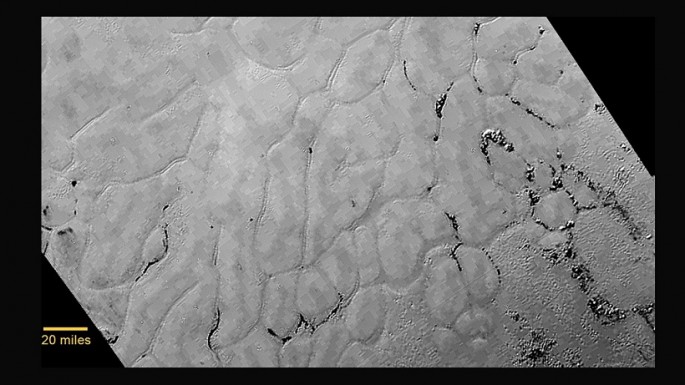Another brand new set of images of Pluto were released by NASA's New Horizons yesterday, now revealing icy plains and its bizarre "heart" feature in closeup views that are never seen before. This heart feature is just one of the many images NASA released into an animated video.
Since its epic flyby last july14, the New Horizons spacecraft has been transmitting a deluge of data back to Earth that completed the first closest ever flyby of Pluto. NASA scientists are surprised by the images and other data sent back by the probe, where they revealed remarkable features from 48,000 miles above the dwarf planet's heart and icy plains.
According to Jeff Moore who is the lead scientist of New Horizons' Geology, Geophysics and Imaging Team at NASA's Ames Research Center, this terrain is not that easy to explain as this new discovery of vast and craterless plains on Pluto is extremely unexpected of the flyby.
These young, icy plains are now called "Sputnik Planum" after the first man made satellite to orbit Earth. These plains have irregular patches found between fractures that are measured 12 miles across which appears to be surrounded by shallow troughs.
Scientists believe that these patches were formed due to different, contrasting materials and compositions that are formed on the planet's surface, almost similar to the process of how mud cracks and dries on Earth.
Another theory involves convection, where different materials underneath Pluto's surface come bubbling up, causing these odd cracks. Scientists also revealed that this process could have resulted from frozen methane, nitrogen and carbon monoxide getting trapped beneath the surface layer as it was heated by Pluto's core.
Meanwhile, Pluto's "heart" is now named as "Tombaugh Regio" after the astronomer who discovered the dwarf planet, Clyde Tombaugh. New Horizons' data will be beamed back to NASA during the course of 16 months where scientists are continuing to pore over new discoveries of Pluto's mysterious features.



























